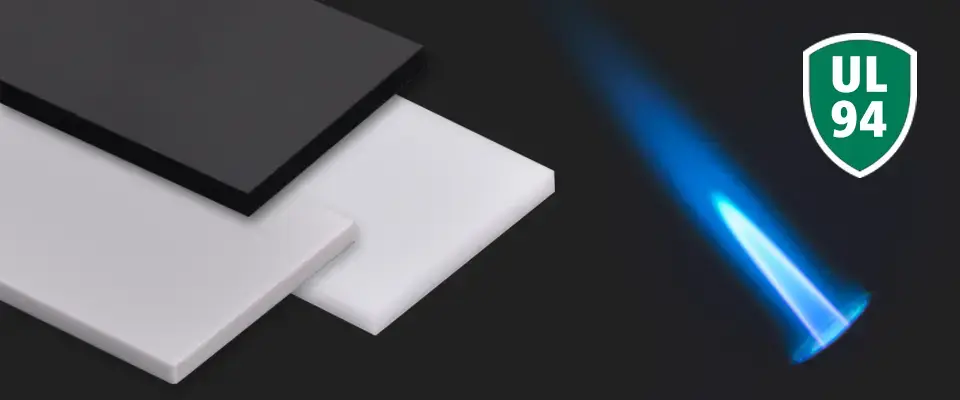Plastic housings and components are often the ideal choice when it comes to design options, low weight, corrosion resistance, etc. Testing plastics in accordance with UL 94 can be an important safety feature for their use in various areas of application with a higher fire risk, e.g. for devices and systems in electrical and electronic installations.
Below, we offer a comprehensive explanation of the UL 94 testing procedure and its classification system.
Testing Process Execution
The flammability test for plastics according to UL 94 is a standard set by Underwriter Laboratories (UL), an independent American organisation, and serves to determine and classify the flame resistance of plastics.
Classification is determined by evaluating the burning rate, extinguishing time, presence of flaming droplets and the duration of afterglow following flame removal. Multiple classification levels may apply to a given material, depending on the thickness of the standardised test specimen.
Standardised test pieces are prepared from the materials in specified dimensions and varying thicknesses. Fire behaviour is subsequently assessed under controlled laboratory conditions in accordance with defined evaluation criteria.
The self-extinguishing properties must therefore be understood in connection with the test pieces from the burning test.
Vertical test procedure
(1) Standardised test piece, (2) Flame exposure, (3) Cotton sample
Classifications according to UL 94
V-0
Vertical test procedure: The total afterburn time for 10 flame exposures is less than 50 seconds.
No test piece burns for longer than 10 seconds after removal of the flame and produces no burning droplets that could ignite an underlying cotton sample. Afterglow max. 30 seconds.
V-1
Vertical test procedure: The total after-burn time for 10 flame exposures is less than 250 seconds.
No test piece burns for longer than 30 seconds after removal of the flame and produces no burning droplets that could ignite an underlying cotton sample. Afterglow max. 60 seconds.
V-2
Vertical test procedure: As for 94 V-1, but burning droplets are permitted during the test, which may ignite a cotton sample underneath.
In all of the above cases, the test piece itself extinguishes.
If the test piece continues to burn after 30 seconds, a horizontal test may be performed to achieve a classification according to UL 94 HB.
Horizontal test procedure
(1) Standardised test piece, (2) Flame exposure, (3) Cotton sample
HB
Horizontal test procedure: Here, the burning speed must not exceed a certain value – for wall thicknesses up to 3 mm, the limit value is below 76 mm/min, and for wall thicknesses above 3 mm, the limit value is below 38 mm/min.
What is a UL Yellow Card?
The UL Yellow Card is proof that the tested plastic meets the requirements of UL 94. It contains the unique UL File Number and detailed information about the certification. This gives you the assurance that the certified plastic meets the safety requirements.
Upon request, we will gladly provide the corresponding UL Yellow Card. Please share the order number of the OKW enclosure or rotary knob manufactured from UL-certified flame-retardant material.
☝️Please note that the flammability rating always refers to the respective plastic and that the tests are carried out on defined test pieces under controlled laboratory conditions. In the case of manufactured parts, e.g. housings and components, deviations may therefore occur due to different material thicknesses in the wall thickness or processing/machining. A flammability classification according to UL 94 can only be achieved through testing.
Here you will find valuable information on properties for material selection
To identify which standard OKW enclosures and tuning knobs are manufactured from flame-retardant materials, please click here.






Leave Your Feedback